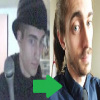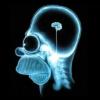Lanicemine (AZD6765) is an NMDA antagonist developed by AstraZeneca,[1] which is being studied for the treatment of major depression. It was originally developed as a neuroprotective agent, but was redeveloped as an antidepressant following the observation that the anesthetic drug ketamine has potent antidepressant effects, but also has hallucinogenic side effects which make it unsuitable for use as an antidepressant in most circumstances. Lanicemine is a low-trapping NMDA receptor antagonist which has been found in human trials to have similar rapid-acting antidepressant effects to ketamine, but with little or no psychotomimetic side effects.[2]
It has a simple structure compared to GLYX-13. Anyone interested? Seems just as effective and without prominent side effects:

KK nvm:
A randomized trial of a low-trapping nonselective N-methyl-D-aspartate channel blocker in major depression.
Zarate CA Jr, Mathews D, Ibrahim L, Chaves JF, Marquardt C, Ukoh I, Jolkovsky L, Brutsche NE, Smith MA, Luckenbaugh DA.
Source
Experimental Therapeutics and Pathophysiology Branch, National Institute of Mental Health, National Institutes of Health, and Department of Health and Human Services, Bethesda, MD 20892, USA. zaratec@mail.nih.gov
Abstract
BACKGROUND:
The high-affinity N-methyl-D-aspartate (NMDA) antagonist ketamine exerts rapid antidepressant effects but has psychotomimetic properties. AZD6765 is a low-trapping NMDA channel blocker with low rates of associated psychotomimetic effects. This study investigated whether AZD6765 could produce rapid antidepressant effects in subjects with treatment-resistant major depressive disorder (MDD).
METHODS:
In this double-blind, randomized, crossover, placebo-controlled study, 22 subjects with DSM-IV treatment-resistant MDD received a single infusion of either AZD6765 (150 mg) or placebo on 2 test days 1 week apart. The primary outcome measure was the Montgomery-Åsberg Depression Rating Scale, which was used to rate overall depressive symptoms at baseline and 60, 80, 110, and 230 min postinfusion and on Days 1, 2, 3, and 7 postinfusion. Several secondary outcome measures were also used, including the Hamilton Depression Rating Scale.
RESULTS:
Within 80 min, Montgomery-Åsberg Depression Rating Scale scores significantly improved in subjects receiving AZD6765 compared with placebo; this improvement remained significant only through 110 min (d = .40). On the Hamilton Depression Rating Scale, a drug difference was found at 80 and 110 min and at Day 2 (d = .49). Overall, 32% of subjects responded to AZD6765, and 15% responded to placebo at some point during the trial. No difference was observed between the groups with regard to psychotomimetic or dissociative adverse effects.
CONCLUSIONS:
In patients with treatment-resistant MDD, a single intravenous dose of the low-trapping NMDA channel blocker AZD6765 was associated with rapid but short-lived antidepressant effects; no psychotomimetic effects were observed.























































